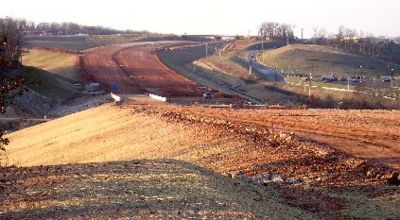Difference between revisions of "Category:300 BASES"
Jump to navigation
Jump to search
m (article construction) |
|||
| (8 intermediate revisions by 2 users not shown) | |||
| Line 1: | Line 1: | ||
| + | [[image:300.jpg|right|400px]] | ||
| + | |||
<categorytree mode=all>302 Stabilized Permeable Base</categorytree> | <categorytree mode=all>302 Stabilized Permeable Base</categorytree> | ||
<categorytree mode=all>303 Rock Base</categorytree> | <categorytree mode=all>303 Rock Base</categorytree> | ||
<categorytree mode=all>304 Aggregate Base Course</categorytree> | <categorytree mode=all>304 Aggregate Base Course</categorytree> | ||
| + | <categorytree mode=all>309 Laboratory Testing Guidelines for Portland Cement Concrete Base</categorytree> | ||
<categorytree mode=all>310 Aggregate Surface</categorytree> | <categorytree mode=all>310 Aggregate Surface</categorytree> | ||
<categorytree mode=all>320 Soils and Geology</categorytree> | <categorytree mode=all>320 Soils and Geology</categorytree> | ||
| − | + | <categorytree mode=all>321 Geotechnical Engineering</categorytree> | |
| − | = | + | <categorytree mode=all>350 Design for Bases and Aggregate Surfaces</categorytree> |
| − | + | <categorytree mode=all>360 Construction Inspection for Bases and Aggregate Surfaces</categorytree> | |
| − | + | {|style="padding: 0.3em; margin-left:10px; border:2px solid #a9a9a9; text-align:center; font-size: 95%; background:#f5f5f5" width="200px" align="right" | |
| − | + | |- | |
| − | = | + | |'''Related Information Video''' |
| − | + | |- | |
| − | + | |[[media:130.1.6 LifeCycle.wmv|'''Life Cycle of a Highway''']] | |
| − | + | |} | |
| − | + | <categorytree mode=all>Shoulder Maintenance</categorytree> | |
| − | |||
| − | |||
| − | |||
| − | |||
| − | |||
| − | |||
| − | |||
| − | |||
| − | |||
| − | |||
| − | |||
| − | |||
| − | |||
| − | |||
| − | |||
| − | |||
| − | |||
| − | |||
| − | |||
| − | |||
| − | |||
| − | |||
| − | = | ||
| − | |||
| − | |||
| − | |||
| − | |||
| − | |||
| − | |||
| − | |||
| − | |||
| − | |||
| − | |||
| − | |||
| − | |||
| − | |||
Latest revision as of 12:51, 21 August 2009
